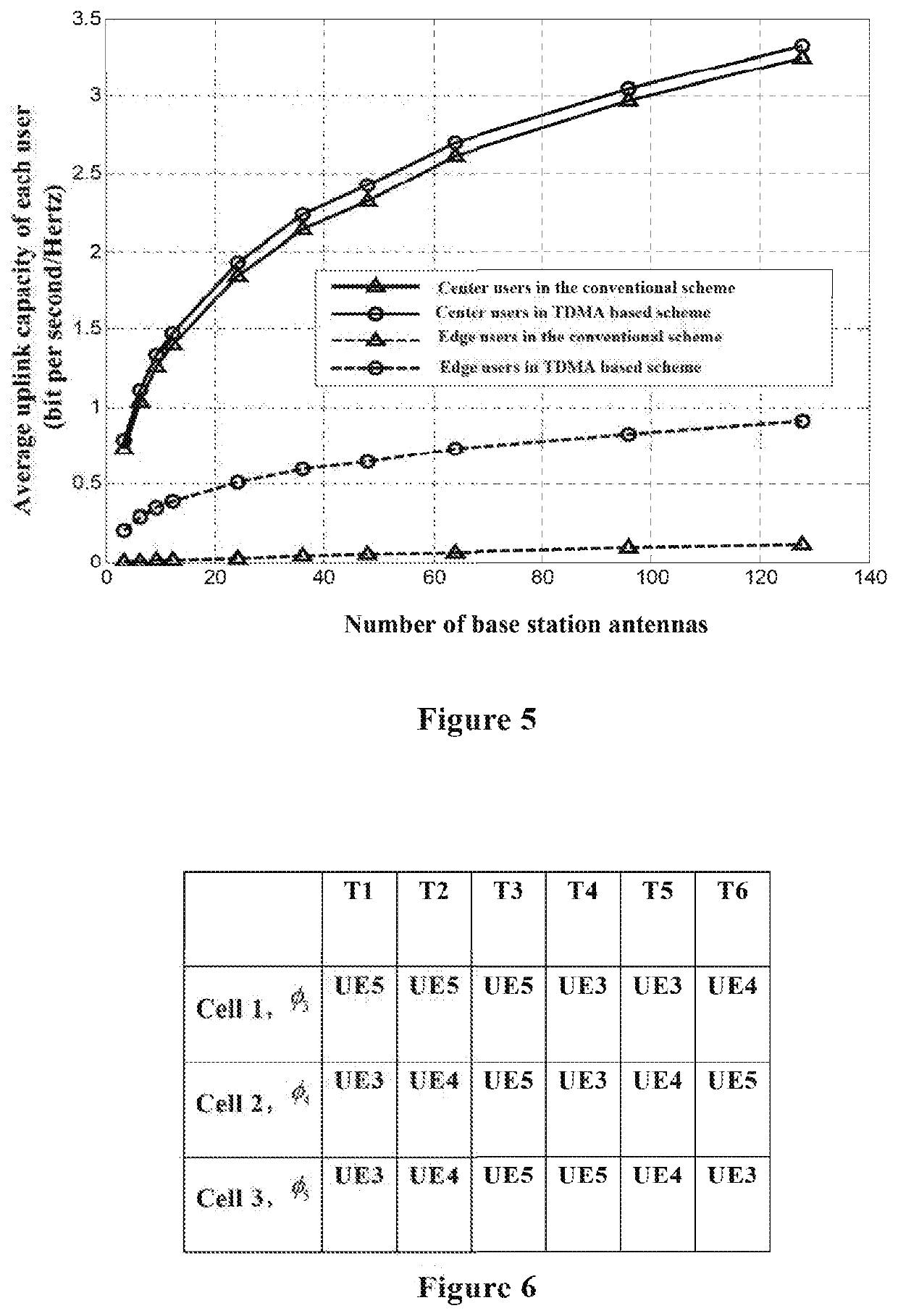Apparatus and method for wireless communication
a wireless communication and apparatus technology, applied in electrical apparatus, digital transmission, transmission path sub-channel allocation, etc., can solve the problems of inability to effectively distinguish pilot signals, limited system performance of large-scale mimo system, and lack of orthogonal pilots, so as to improve the utilization efficiency of pilot sequences and reduce pilot pollution. , the effect of enhancing the accuracy of uplink channel estimation
- Summary
- Abstract
- Description
- Claims
- Application Information
AI Technical Summary
Benefits of technology
Problems solved by technology
Method used
Image
Examples
first embodiment
[0033]FIG. 1 illustrates a block diagram of a structure of an apparatus 100 for wireless communications according to an embodiment of the present disclosure. The apparatus 100 includes: a classification unit 101, configured to classify communication devices in a cell where the apparatus 100 is located into a plurality of communication device groups, wherein the plurality of communication device groups include a first communication device group and a second communication device group, and an allocation unit 102, configured to allocate pilot sequences in a first pilot group to the first communication device group, and allocate pilot sequences in a second pilot group to the second communication device group, wherein at least one of the following reuse configurations is performed in the case that the pilot sequences are insufficient: at least part of the communication devices in the second communication device group reuse at least one of the pilot sequences in the second pilot group, an...
second embodiment
[0068]FIG. 12 illustrates a block diagram of an apparatus 200 for wireless communications according to another embodiment of the present disclosure. Besides the units shown in FIG. 1, the apparatus 200 further includes a notification unit 201 configured to notify a corresponding communication device of information on the allocated pilot sequence and time resource.
[0069]The information may be contained in, for example, at least one of PDCCH signaling and RRC signaling.
[0070]For example, the transmission period and the subframe offset of the pilot sequence may be configured using the RRC signaling. Communication devices involved in the reusing have different subframe offsets. As described above, the allocation unit 102 may select, according to the cell ID, an edge pilot sequence which takes a cyclic shift as the index. The apparatus 200 may further include a signaling generation unit (not shown in FIG. 12), which is configured to generate the RRC signaling which includes the transmiss...
third embodiment
[0074]As described in the first embodiment, the classification unit 101 classifies communication devices on the cell edge to the second communication device group. In this embodiment, the classification unit may be configured to perform the classification according to channel conditions of the communication device. For example, a communication device with good channel conditions is classified into the first communication device group, and a communication device with poor channel conditions is classified into the second communication device group.
[0075]As shown in FIG. 13, besides the units in the apparatus 100, the apparatus 300 for wireless communications according to this embodiment further includes a reception unit 301 configured to receive channel quality measurement information and / or a radio resource management measurement report from the communication device. The channel quality measurement information and / or the radio resource management measurement report are used by the cl...
PUM
 Login to View More
Login to View More Abstract
Description
Claims
Application Information
 Login to View More
Login to View More - R&D
- Intellectual Property
- Life Sciences
- Materials
- Tech Scout
- Unparalleled Data Quality
- Higher Quality Content
- 60% Fewer Hallucinations
Browse by: Latest US Patents, China's latest patents, Technical Efficacy Thesaurus, Application Domain, Technology Topic, Popular Technical Reports.
© 2025 PatSnap. All rights reserved.Legal|Privacy policy|Modern Slavery Act Transparency Statement|Sitemap|About US| Contact US: help@patsnap.com



